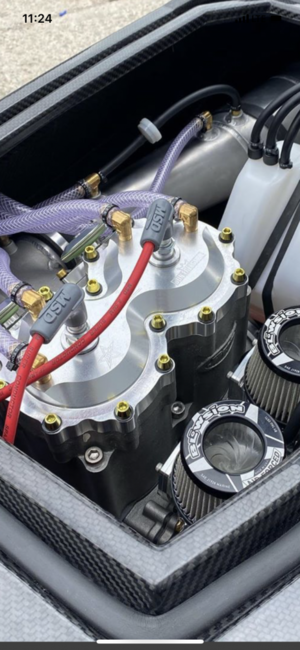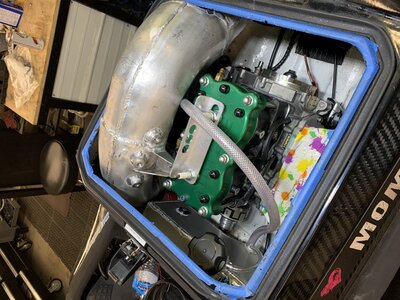My guess is that adding the water has a damping affect on the pressure wave, so a dry pipe is more efficient than a wet pipe because it doesn't have that damping affect reducing its effectiveness, but there are all of the downsides to a dry pipe with weight and complication and such, so BUN kept the first section of the pipe dry to get some/most of the more effective scavenging from the first section of pipe, then inject water for the rest for all of the reasons that you run a wet pipe.
Could even be as simple as the water jacket protects the coupler so it's just a wet pipe that you can get away with running really hot/minimal water without blowing couplers.
Pure speculation on my part.
I've always been kind of annoyed by everybody saying the standard "dry pipes are better for high rpm because hot gasses faster speed of sound"....obviously you can make a wet pipe that is really short with a very high tuned rpm, or a really long dry pipe with low tuned rpm, so it's not a speed of sound thing, there's a reason why people deal with the obvious downsides of a dry pipe other than just to make it act shorter. I suspect dry pipes are more efficient but more of a pain in the ass, so if you are willing to deal with the pain in the ass to get a little more power you use a dry pipe and if not you use a wet pipe and the people who are willing to deal with it are usually racers or really high end freestyle guys that use more high end power bands.





